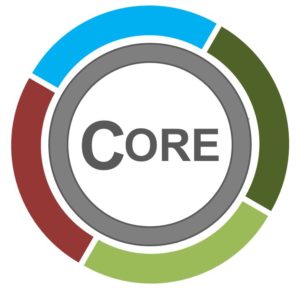
Appropriateness of each requisition, order or prescription is assessed prior to initiation of a procedure/treatment
The importance of appropriateness
- Ensuring the patient receives the appropriate examinations and treatment is an important part of the MRT’s role as patient advocate1.
- Inappropriate procedures or treatment can have adverse outcomes2:
- Delay to diagnosis and/or treatment
- Potential for patient harm
- Unnecessary exposure to risk
- Financial and human resource burden
- The Canadian Association of Radiologists cites a large number of inappropriate procedures that neither altered clinical management or added confidence to the physician’s diagnosis, such as2:
- Repeat investigations
- Investigations where results were unlikely to affect patient management
- Investigating too early (i.e., before the disease could have progressed or before the results could influence treatment)
- Inappropriate investigation (e.g., choosing a CT when MRI would be more appropriate)
- Failure to provide appropriate clinical information and questions for investigations to answer
- Over-investigation
Evaluation of appropriateness
- Evaluating the appropriateness of a requisition, order or prescription requires the MRT to have an understanding of3:
- Desired outcomes of the procedure/treatment
- Diagnostic and/or therapeutic benefits and risks of the procedure/treatment and possible alternatives
- Patient condition (physical, psychological, emotional)
- In practical terms, this means the MRT assesses:
- Completeness of requisition or prescription
- Information within the requisition, order or prescription
- Patient condition
- Patient history
- Previous exams/treatment
- Alternate courses of action
- Typical dose range
- Patient position and immobilization
- Field of view
- Technique to be used
Evaluation of information received
- Requisitions, orders and prescriptions are the responsibility of referring healthcare professionals, including4:
- Accuracy and clarity of information
- Sufficient detail included to enable those receiving the requisition, order or prescription to understand the diagnostic or clinical problems to be resolved
- Legible communication
- The specific information required varies by procedure, discipline, facility and phases of treatment.
- MRTs should be familiar with facility policy or guidelines with regard to essential information
- Some self-referral services, such as breast screening, may not require a requisition.
- MRTs should be familiar with the laws and regulations concerning self-referral services in their province
- A requisition, order or prescription that lacks important information can lead to assumptions which increase the likelihood of sub-optimal patient care.
- Repeating a previous investigation is one of the most common ways to subject a patient to unnecessary imaging procedures5.
- Patient documentation may indicate whether similar examinations have already been carried out
- If evidence of a similar examination is found, the benefit of repeat examination is weighed against risks in the appropriateness decision
Patient evaluation
- Ensuring that examinations/treatments are appropriate for a given patient requires the MRT to:
- Confirm patient identifiers (e.g., name and date of birth) – to match the patient presenting for the procedure/treatment
- Evaluate the patient history – to confirm signs and symptoms justify the chosen course of action
- Assess for possible contraindications
- Confirm anatomic details – to ensure the correct anatomy is imaged/treated (e.g., right/left side)
Review of alternatives within the MRT scope of practice
- MRTs understand the risks and benefits of various courses of action3.
- The relative appropriateness of one option is weighed against the alternatives to determine the optimal course of action for each patient.
- Some factors to consider in comparing two or more courses of action, include:
- Risk to the patient
- Relative benefits of each method
- Repercussions of timing and/or delays
Seeking clarification
- If an MRT believes that any aspect of the requisition or prescription calls the appropriateness of the procedure or treatment into question, it is their obligation to seek clarification with the responsible healthcare professional.
- MRTs can find direction on clarifying information with the ordering physician/practitioner in the guideline on Clarification of requisition, order or prescription
Related Posts
References
-
Canadian Association of Medical Radiation Technologists. Standards of Practice. Available from: http://www.camrt.ca/abouttheprofession/Standards_of_Practice.pdf. [Accessed 3 Apr 2012]
-
Canadian Association of Radiologists. CAR Standards for General (Plain) Radiography. June 2000. Available from: http://old.car.ca/Files/general_radiography.pdf. [Accessed 22 Dec 2017]
-
Royal College of Radiologists. A Guide to Justification for Clinical Radiologists. Available from: http://www.rcr.ac.uk/publications.aspx?PageID=310&PublicationID=2#anchor143398. [Accessed 4 Apr 2012]
-
Canadian Association of Radiologists. 2012 CAR Diagnostic Imaging Referral Guidelines. Available from: https://car.ca/patient-care/referral-guidelines/. [Accessed 12 Dec 2018]
-
Lee SI, Saokar A, Dreyer KJ, et al. Does Radiologist Recommendation for Follow-up with the Same Imaging Modality Contribute Substantially to High-Cost Imaging Volume? Radiology. 2007;242:857-864.
